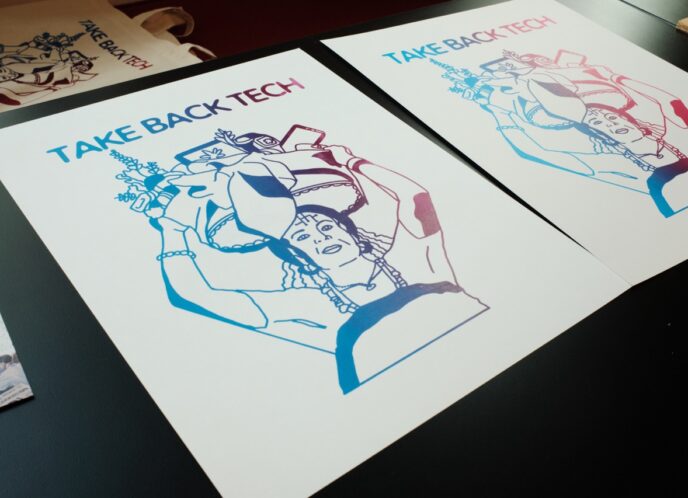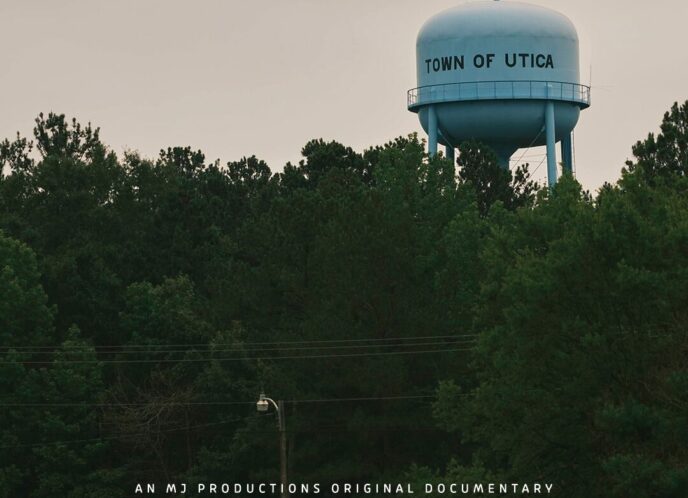The MediaJustice Network Fellowship (MJNF) is an 8-month political education and skill-building intensive that builds the leadership of the next generation of media and digital justice organizers, educators, and advocates. The fellowship specifically supports emerging leaders in advancing media-justice related projects that build community power. One way we do this is by inviting alumni from previous cohorts to participate in developing the leadership of the cohorts to follow. Aen Navidad (they/them/elle/ellx) is an alum of the 2021 MediaJustice Fellowship, and we’re so grateful to them for sharing this reflection from a recent MJNF alumni and mentors panel, and for all they’ve shared with our 2023 Fellows and the rest of the MediaJustice Network!
When I initially applied to the MediaJustice Network Fellowship, I never imagined the invaluable tools and marvelous community I would gain from a program like this. The MediaJustice Fellowship introduced me to 11 other amazing fellows, all of who are deeply committed to empowering their communities, amplifying access to resources, and building community power in the face of injustice. During our time together, we worked on projects that would bring light to broadband (in)access, racialized disinformation, and big tech surveillance— all issues that disparagingly target marginalized communities and the communities we come from. In my transition from fellow to alumni, I was excited to return to an empowering, social-educational space, where fellows, comrades, and colleagues alike join together in the gathering to introduce the newest cohort to their mentors. In building our community, staff and alumni are invited to observe and share connections between our collective work in the fight against online accountability and racialized disinformation.
The session opened with introductions from the ah-mah-zing! crew of mentors:
- Expert, trainer, and award-winning podcast host of There Are No Girls on the Internet, Bridget Todd (she/her)
- Filmmaker, artist, curator, political educator, and founding member of a BIPOC worker-owned cooperative, Shadow Work Media, Luce Capco Lincoln (he, they, siya)
- Kairos Fellowship Director of Campaigns, Twitter extraordinaire and DIY-connoisseur, Jelani Drew-Davi (they/them)
- And investigative researcher, winner of the Sidney Hillman Foundation’s 2020 Social Justice Reporting Award, disinformation defense expert, Jaime Longoria (he/they).
You can read more about the mentors here.
In getting to share space with them all, I was invigorated by their spirit and great expertise in social/media accountability, online organizing, and building community in the various experiences of roaming the digital realm.
The Digital Realm
The digital realm can be described as the spaces we occupy online, where culture and creation are cultivated and we hold power in how we shape our stories and shared narratives.
The panel began with inspiration from Luce’s longtime movement work. The mentors then each shared their experiences bridging their work and the intersection of online advocacy. After hearing about their experiences, there was time for a Q&A. I appreciated questions on how can we share our multidimensional narratives and amplify our solutions to the ongoing challenges that Black women and people, trans/nonbinary, people of color, and those marginalized by white supremacy face in the digital realm and online social spaces, like social media. Notably, the challenges we’ve encountered so far have demanded our attention and awareness on disinformation, racism, infiltration in our elections, personal safety (re: doxxing); the list goes on. “Everyone has some insight to this,” Bridget Todd mentioned. Bridget Todd’s expertise lies in social media advocacy and bringing awareness to the disproportionate impacts (such as discrimination, sexual harassment, and impersonation) Black women face in the online world. She regularly meets with social media giants to advocate and create policy against these racist, sexist, and harassment-filled tropes with direct attempts to talk about it, not around it.
“Social media is made by marginalized communities.” Read that again. “Social media is made by marginalized communities,” Bridget mentioned. It is a space where people of color can gather and become creators of our own stories and “amplify some of the wonderful things that come with being a marginalized person on the Internet” too. Imagine what we can achieve collectively when we push Facebook, Twitter, Instagram, take-your-pick social media, to address our needs, work for us, and actually enforce policies that will protect us when marginalized communities encounter harm and harassment online.
The Contest for Power
In the digital realm, there is a strong contest for power and a desire to be the loudest power in the room, being the agency that holds the tightest and strongest influence on pushing a narrative or idea with a community and grow numbers in building that community.
We saw an influx of mass mobilization and awareness efforts heavily shared across all online platforms, media, and TV channels. The pandemic, drastic isolation, and deeply impacted and stressed systems of care and information collectively became a catalyst for the spread of misinformation and disinformation. In our terms, misinformation is the spread of false or inaccurate information, sometimes unintentionally or without ill intent. Disinformation is the intentional spreading of inaccurate or false information with the intent to harm, radicalize or mislead others, sometimes considerably by groups intended to rival the power of the media, minority groups, or community work. Between trending topics, Insta-stories, reels/TikToks, and bitesize short vertical versions of news reports, these were the essentials for the contest of power in the digital realm. In such an overwhelming and constant flow of information, disinformation tactics were strategically used to oppress others.
Almost everything and everyone was informing one another about what was happening in their local communities, all at once! But how effective were these efforts in actuality? One of the major critiques from this era, per our conversation together, says that fear-mongering and further mass efforts to politicize and (separate) one another took effect, per isolation restraints during the pandemic. While the contest for power can be delightful and empowering when it is given back to the community, contests for power from bad actors to misinform and purposely dismantle communities from accessing their right to accurate and helpful information caused great disruption.
In closing the Q&A, I asked the mentors about their thoughts on the misconception that online organizing will never equate to or create the same change as organizing in person.
With social media tools within the reach of our fingers, a key missed opportunity (so far) has been using these tools not only to create content and build awareness but to also create spaces to build connection and collaboration. I thought of Jaime’s experience when he shared that this absence is deeply depicted throughout traditional outlets of news and media, between media online and traditional media spaces, such as cable news television. Jaime shared about the time spent reading 2000 to 3000-word articles through various newsrooms and outlets, evaluating what is true, what is false, and what is valuable to our communities. This work made him realize the absence of awareness and amplification of community needs that could deeply and directly serve the public. In my work, I deeply see the need for including this awareness and spaciousness and taking up space in the digital realms we collectively occupy, and include these efforts within the work to further protect and keep our communities safe from misinformation and harm. Since the panel the following questions have stayed with me:
- How do we share our stories, and furthermore, amplify our solutions?
- What does it look like when information (and bad actors) infiltrate the community?
- What does it mean to organize Black and brown communities?
- And what does it look like when we push big tech and social media giants to address our needs and update and actually enforce policy?
This could look like news networks dedicating time to educational segments, using their platforms to aid in empowering those who directly face struggle, and cultivating spaces that go beyond fact-checking and serve to make the information more accessible, feasible, and understandable. We have stories that go beyond our traumas, and in recent coverage, we’ve seen the sensationalism and division that can happen. In reflecting on Jelani’s shared belief in “a future where tech belongs to and works for us,” these efforts we can create will shape the world we want to have physically. While we can understand that our efforts and culture shifts will require lots of community building, resource accessibility, and time, through a spectrum of telling our stories, tech accountability, and centering those most impacted, we shall find a future that is safe and belongs to us all.



